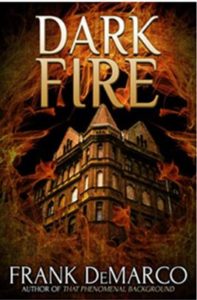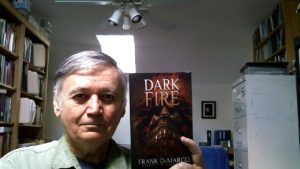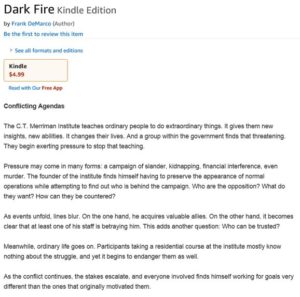
The Revolutionary War in a nutshell
The thing to remember is that it was both a revolution and a war. It began with bad British statesmanship in dealing with 13 of its colonies, and it ended as a global conflict that pitted the Empire against not only some provincials with a raggedy excuse for an army, but France, and Spain and the Netherlands. It didn’t need to happen in the first place, and then it all got away from them, and it wasn’t any wonder that the band of one of the British armies, as it went out to surrender, played “the world turned upside down.”
Disregarding the politics for the moment, here is a brief outline of how the war went.
It started in Boston, because the colonial government had been suspended, and British troops had been stationed there, following the Boston Tea Party. In April, 1775, a British military detachment marched out of Boston to confiscate arms and powder that the colonials were storing in Concord. The result was “the shot heard round the world” at Lexington and another confrontation at Concord, and a long running battle all the way back to the safety of Boston. The colonials promptly bottled them up there.
In May, Ethan Allen and Benedict Arnold captured Fort Ticonderoga on Lake Champlain. In June, the British attempted to fight their way out of Boston, and met disaster at Bunker Hill. In July, General George Washington, newly appointed to command of the Continental Army, arrived to take charge, but the army was desperately short of ammunition, and he could take no offensive action for month after month.
In September, two American expeditions under General Richard Montgomery and Arnold invaded Canada, but both failed. The Americans were thrust back to Fort Ticonderoga, from where they had begun. However, the expeditions and the subsequent battles occupied the British forces until June, 1776, which meant it was too late in the season for them to begin another campaign. Had they been able to aim their southward thrust in 1776 instead of 1777, who knows but that instead of Saratoga, the world might have seen another defeat of the American rebels? But, that’s not what happened.
Meanwhile, in March, 1776, Henry Knox and his men arrived at Boston with cannon salvaged from Fort Ticonderoga, transported on sleds over the hard-packed snow. Those cannon, installed on the Dorchester Heights, made it impossible for the British to remain in Boston. On St. Patrick’s day the fleet, and a good number of Loyalists, retreated to Halifax, Nova Scotia, never to return to Boston.
By June the British forces (which were not numerous) had been expelled from every one of the 13 colonies. Royal governors and officials fled to Royal Navy warships for protection, or British forces lost pitched battles with colonials.
In July, as you may have heard, the Continental Congress declared that the 13 colonies were, and of a right ought to be, free and independent states.
However, in August the British took New York City (nearly captured Washington in the process) and then chased the Continental Army across the width of New Jersey and into Pennsylvania, where they arrived December 7, down to fewer than 5,000 men fit for duty, with 3,500 of them looking forward to their enlistment expiring at year’s end.
As all the world knows, Washington led a daring raid back across the river on the night of December 25th, and caught the enemy napping – literally – after too much Christmas celebration. He captured a thousand Hessian soldiers (rented out by their king to King George), then, in January, 1777, picked up another 200 British prisoners when he successfully attacked their rearguard in Princeton. Although still outnumbered, he took his army into winter quarters in Morristown, New Jersey, and the British did not choose to attack.
Then came the British campaign that inadvertently turned the revolution into a world war.
The plan looked good on paper. John Burgoyne’s army was to march south from Quebec along the Hudson and meet Richard Howe, marching up the Hudson from New York. Between the two of them, they could cut off New England from the rest of the colonies. But Howe took his army to capture Philadelphia (by sea, via the Chesapeake, rather than merely marching across New Jersey!), and wasn’t anywhere near Burgoyne when Gentleman Johnny really could have used his assistance. His entire army had to surrender to Arnold and Gates at Saratoga.
Losing an army was catastrophic enough. What made it worse was that it was this victory, won in the field by an American army, that convinced the king of France and his ministers to roll the dice on the colonials. They had been helping surreptitiously. Now they made it an alliance. It took a while, but that also brought in Spain in June, 1779, and the Dutch Republic in late 1780.
Meanwhile, in September, 1777, the British took Philadelphia, the capital and the largest city in British North America. They then spent the winter comfortably, while Washington barely kept his army together at nearby Valley Forge. The times that try men’s souls, Thomas Paine called them. A quarter of the 10,000 men died from disease and exposure. And yet, when the army emerged from Valley Forge in the Spring, it was in good order and was better trained than ever before, because Baron von Steuben had been training them in the latest Prussian tactics.
With the rebellion having become a war, the British were forced to change strategy. For one thing, New York City was now vulnerable to a French fleet. To reinforce it, the British were forced to abandon Philadelphia. The last major battle in the northern colonies was the Battle of Monmouth, in June, 1778, in which Washington tried to prevent the British from reaching New York City. The British were now withdrawing troops from North America to meet needs elsewhere.
The winter of 1779-80 was even worse for the American army than Valley Forge. No money, no supplies, no real government. It was all Washington could do to hold things together. And then in September, 1780, General Benedict Arnold, a true hero of the war to that point, turned his coat. He plotted to surrender the fort at West Point that prevented the British Navy from proceeding past it up the Hudson River. (Why? Ironically, because he hated the French, who were now allies because of the battle he himself had done to much to win.) The treason was detected and the act prevented, but it was a shock. And Arnold then began raiding with the British.
The war had begun in New England and had moved to the middle colonies. The final phase was fought in the southern colonies.
In December, 1778, the British captured Savannah, Georgia. In May, 1779, it was Charleston (and much of the southern Continental Army) and another decisive defeat in North Carolina. When in August, 1780, the Americans were again defeated in South Carolina, the British invaded Virginia, where, as everybody knows, another British army was brought to surrender, this time at Yorktown. This only happened because a French fleet chased a British fleet away from the mouth of the Chesapeake long enough for Washington to starve out Cornwallis. But that did it. The surrender of an army of more than 8,000 men on October 19, 1781, was the last straw for the British, though it was another year and a half before peace was signed.
And that, in an embarrassingly superficial nutshell, is the outline of the revolution that turned into a world war.


